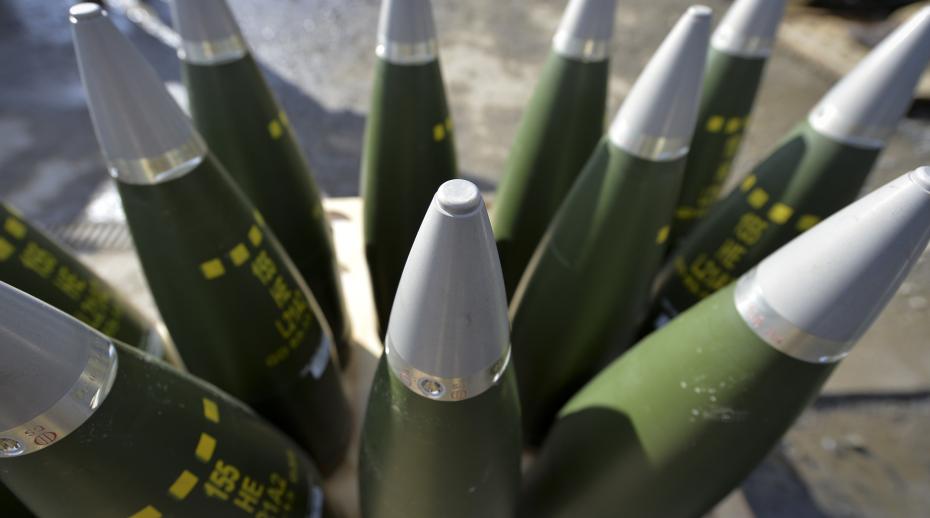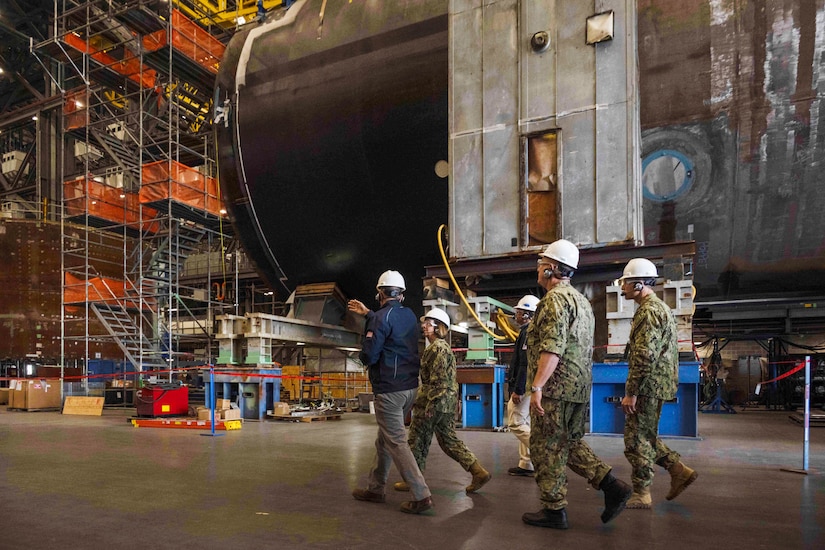Rise in SIPRI Top 100 arms sales revenue delayed by production challenges and backlogs

(Stockholm, 4 December 2023) Revenues from sales of arms and military services by the 100 largest companies in the industry totalled $597 billion in 2022, 3.5 per cent less than 2021 in real terms, even as demand rose sharply, according to new data released today by the Stockholm International Peace Research Institute (SIPRI), available at www.sipri.org.
Read this press release in Catalan (PDF), French (PDF), Spanish (PDF) or Swedish (PDF).
Click here to explore the interactive table of the SIPRI Top 100 ranking of arms producers and military services providers.
Click here to explore the SIPRI Top 100 interactive map.
Download the SIPRI Fact Sheet here.
The decrease was chiefly the result of falling arms revenues among major companies in the United States. Revenues increased substantially in Asia and Oceania and the Middle East. Outstanding orders and a surge in new contracts suggest that global arms revenues could rise significantly in the next few years.
Demand for weapons grows but production lags behind
Russia’s full-scale invasion of Ukraine and geopolitical tensions around the world fuelled a strong increase in demand for weapons and military equipment in 2022. However, despite receiving new orders, many US and European arms companies could not significantly ramp up production capacity because of labour shortages, soaring costs and supply chain disruptions that were exacerbated by the war in Ukraine. In addition, countries placed new orders late in the year and the time lag between orders and production meant that the surge in demand was not reflected in these companies’ 2022 revenues.
‘Many arms companies faced obstacles in adjusting to production for high-intensity warfare,’ said Dr Lucie Béraud-Sudreau, Director of SIPRI’s Military Expenditure and Arms Production Programme. ‘However, new contracts were signed, notably for ammunition, which could be expected to translate into higher revenue in 2023 and beyond.’
In contrast to the major US and European suppliers, companies in Asia and Oceania and the Middle East saw their arms revenues grow significantly in 2022, demonstrating their ability to respond to increased demand within a shorter time frame. This was especially true in countries where companies maintain responsive ‘ever-warm’ manufacturing capabilities, such as Israel and South Korea, and those where companies tend to rely on short supply chains.
Arms revenues fall in USA due to production challenges
The arms revenues of the 42 US companies in the Top 100 fell by 7.9 per cent to $302 billion in 2022. They accounted for 51 per cent of the total arms revenue of the Top 100. Of the 42 US companies, 32 recorded a fall in year-on-year arms revenue, most commonly citing ongoing supply chain issues and labour shortages stemming from the Covid-19 pandemic.
‘We are beginning to see an influx of new orders linked to the war in Ukraine and some major US companies, including Lockheed Martin and Raytheon Technologies, received new orders as a result,’ said Nan Tian, SIPRI Senior Researcher. ‘However, because of these companies’ existing order backlogs and difficulties in ramping up production capacity, the revenue from these orders will probably only be reflected in company accounts in two to three years’ time.’
Asia outperforms Europe on back of military modernization drives
The arms revenues of the 22 companies from Asia and Oceania listed in the ranking rose by 3.1 per cent to reach $134 billion in 2022. This was the second consecutive year where Top 100 arms revenues for Asia and Oceania were higher than those for Europe.
‘Domestic demand and reliance on local suppliers shielded Asian arms companies from supply chain disruptions in 2022,’ said Xiao Liang, a researcher with the SIPRI Military Expenditure and Arms Production Programme. ‘Companies in China, India, Japan and Taiwan all benefited from sustained government investment in military modernization.’
The combined arms revenues of the four South Korean companies in the Top 100 fell by 0.9 per cent, primarily due to an 8.5 per cent drop recorded by the country’s biggest arms producer, Hanwha Aerospace. Two South Korean companies reported revenue growth, most notably LIG Nex1. South Korean companies are likely to see increased revenues in coming years due to a surge in booked orders after signing major arms deals with Poland and the United Arab Emirates.
Modest revenue growth in Europe as Ukraine-linked demand starts to filter through
The arms revenues of the 26 companies in the Top 100 based in Europe rose by 0.9 per cent to reach $121 billion in 2022.
‘The war in Ukraine created demand for materiel suited to a war of attrition, like ammunition and armoured vehicles. Many European producers of these items saw their revenues grow,’ said Lorenzo Scarazzato, a researcher with the SIPRI Military Expenditure and Arms Production Programme. ‘They included companies based in Germany, Norway and Poland. For instance, Poland’s PGZ increased its arms revenue by 14 per cent, benefiting from the accelerated military modernization programme the country is pursuing.’
Trans-European companies Airbus and KNDS were among the main sources of arms revenue growth in Europe, largely due to deliveries against long-standing orders.
Turkish companies drive significant increase in Middle Eastern arms revenue
The Middle East saw the largest percentage rise in arms revenue of any region in 2022, as all seven Middle East-based companies in the Top 100 recorded substantial growth. Their combined arms revenues of $17.9 billion marked an 11 per cent year-on-year increase. The four Turkish companies’ total arms revenues reached $5.5 billion—22 per cent more than in 2021. The aggregate arms revenues of the three Israeli companies in the ranking reached $12.4 billion in 2022, a 6.5 per cent increase compared with 2021.
‘Middle Eastern companies that specialize in less technologically sophisticated products were able to scale up production faster in response to surging demand,’ said Dr Diego Lopes da Silva, SIPRI Senior Researcher. ‘A case in point is Türkiye’s Baykar, producer of the Bayraktar TB-2 drone. Baykar entered the Top 100 for the first time after its arms revenue rose by 94 per cent, the fastest growth rate of any company in the ranking.’
Other notable developments
- In 2022 China accounted for the second largest share of combined Top 100 arms revenues by country, at 18 per cent. The aggregate arms revenues of the eight Chinese arms companies in the ranking increased by 2.7 per cent to $108 billion.
- The arms revenues of the seven companies in the United Kingdom listed in the Top 100 grew by 2.6 per cent to reach $41.8 billion, or 7.0 per cent of the total.
- Due to a lack of data, only two Russian companies were included in the Top 100 for 2022. Their combined arms revenues fell by 12 per cent to $20.8 billion. Transparency among Russian companies continues to decline. Despite being a holding entity with no direct manufacturing capacity, Rostec is included in the 2022 ranking as a proxy for the companies it controls.
- The only Ukrainian company in the Top 100, UkrOboronProm, saw a 10 per cent real-terms drop in its arms revenue to $1.3 billion. Although its arms revenue increased in nominal terms, this was more than offset by the country’s high inflation.
About the SIPRI Arms Industry Database
The SIPRI Arms Industry Database was created in 1989. At that time, it excluded data for companies in China, the Soviet Union and countries in Eastern Europe. The current version contains data for 2002–22, including data for companies in Russia. Chinese companies are included from 2015 onwards.
‘Arms revenue’ refers to revenue generated from the sales of military goods and services to military customers domestically and abroad. Unless otherwise specified, all changes are expressed in real terms and all figures are given in constant 2022 US dollars. Comparisons between 2021 and 2022 are based on the list of companies in the ranking for 2022 (i.e. the annual comparison is between the same set of companies). Longer-term comparisons are based on the sets of companies listed in the respective year (i.e. the comparison is between a different set of companies).
The SIPRI Arms Industry Database, which presents a more detailed data set for the years 2002–22, is available on SIPRI’s website at <https://www.sipri.org/databases/armsindustry>.
This is the first of three major data launches in the lead-up to the release of SIPRI’s flagship publication in mid 2024, the annual SIPRI Yearbook. Ahead of this, SIPRI will release its international arms transfers data (details of all international transfers of major arms in 2023) as well as its world military expenditure data (comprehensive information on global, regional and national trends in military spending in 2023).
Dec. 3, 2023 | By Joseph Clark , DOD News |
The U.S. defense industrial base and federal government must work together to shore up the defense industrial base and workforce of the future, the Pentagon's top acquisition official said yesterday.

William A. LaPlante, undersecretary of defense for acquisition and sustainment, called for a whole-of-government approach and creative solutions by the private sector to draw the talent needed to ensure a capable, innovative industrial base with a talented resilient workforce.
He highlighted the need for our nation and our global allies to produce critical systems and equipment rapidly and at scale. He also said recruiting a trained and skilled workforce to the defense industrial workforce requires public-private collaboration at all levels to build a robust talent pipeline.
"This is at the state and local levels. This is at the high schools all the way up to the federal level," LaPlante said during a panel discussion at the Reagan National Defense Forum in Simi Valley, California.
"I think we can do [an] even a better job at … making sure we're all talking to each other," he said.

LaPlante and his fellow panel members took note of U.S. shipbuilders' investments in training opportunities for high schoolers to develop skills that will translate into well-paying jobs that will be in demand in the future.
"I think the submarine industrial base has done a lot of really good work," he said.
He added that the government and private sector can also work together to ensure that the work environment within defense manufacturing is attractive to future talent.
"If you've been to some of these advanced manufacturing [facilities], it looks like they're at a startup," he said. "It's really cool. That actually matters. And, so, the government—all of us—can help...to invest in those areas."

LaPlante also said the government and private sector can work together to lower barriers to entry for some professions that require highly skilled employees, but not necessarily a college degree.
While he said that this may not be feasible for all positions, it can work in some. "You know, people without college degrees can do software sometimes a lot better than those of us that are overly educated beyond our intelligence," LaPlante said with a touch of humor. "You think about that; that goes against culture, right? But we've got to think of these [things] creatively like that," he said.
The Defense Department is preparing to release a comprehensive National Defense Industrial Strategy—the first of its kind in DOD's history—that seeks to tie our nation's highly capable and innovative industrial and technology base to our current National Defense Strategy and meet the global challenges DOD confronts.







